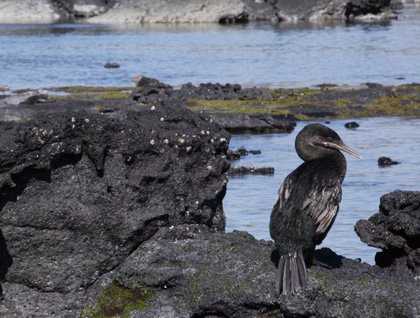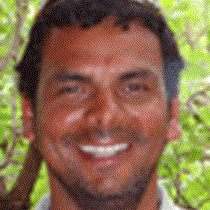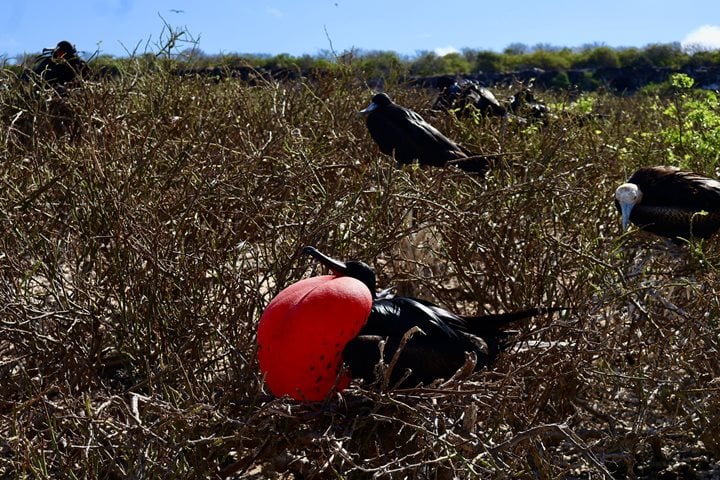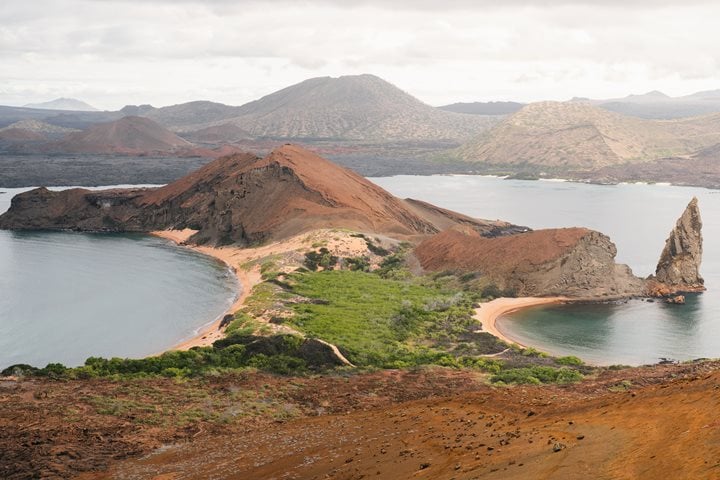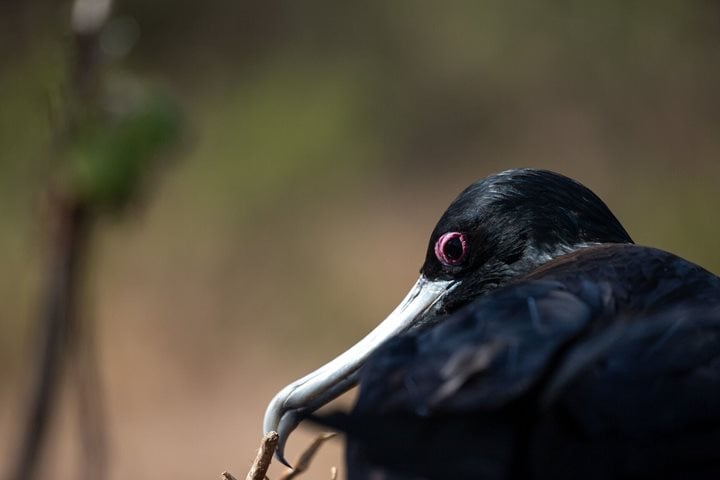After a long cruise aboard National Geographic Endeavour from the center of the archipelago to most western islands, we anchored at the northeast point of the island of Fernandina, known as Punta Espinoza. Here we had a full morning starting with a dry landing just after breakfast. It was low tide and a large portion of the tidal area was exposed, the green and red algae on the rocks attracted a large number of marine iguanas, the first of the featured animals you want to see here. It is hard to count how many dozen of them line up to feast on the delicious seaweed that the rocks at this tidal area offer them. Marine iguanas were not alone here. Nearby where they were feasting we found cormorants, which in the Galápagos Islands are something rather unique. Flightless cormorants were standing drying their wings and having a little rest before returning to the water for more food. Great swimmers and outstanding divers, the cormorant in Galápagos can stay underwater longer than five minutes looking for octopus, fish, and squid.
On the island the conditions for the observation of Galápagos hawks, oystercatchers, and more marine iguanas basking on the rocks were ideal. Light was great for pictures, the experience could not have been better. We returned to the ship before going deep water snorkeling where we all had great chances to be close to tropical reef fish, turtles, and more.
Early in the afternoon we began the next outing of the day at Punta Vincente Roca. We anchored at the Island of Isabela. It’s the largest island and its most northwesterly point is a great location to ride the Zodiacs along the coast and offers one of the best landscapes and some of the finest scenery you’ll find in these islands.
The geology of Ecuador volcano and its features is just one good reason to deep dive into the geology of the islands. All the fauna found along the coast is fantastic—after one hour of watching all the penguins, cormorants, turtles, sea horses, sea lions, and fur seals we returned to the ship. We ventured north of this island and ended our expedition today with a celebration crossing the Equator, what could be better than this?

